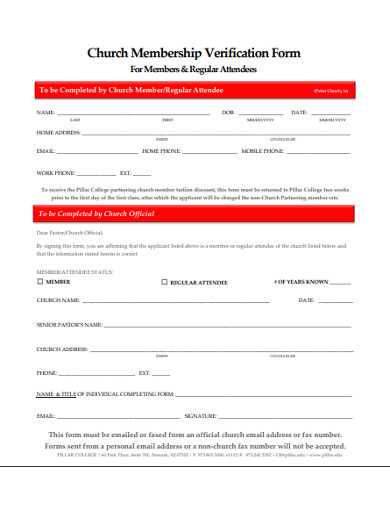In the life of a church, the membership form stands as a significant document that encapsulates the essence of community and faith. While it may appear at first glance to be a mere administrative requirement, a church membership form is a powerful tool that fosters connection, commitment, and understanding among believers. This article explores what a comprehensive church membership form should include, framed within a Christian perspective that seeks to enlighten and engage.
To initiate the design of a church membership form, it is essential to contemplate the essential elements that underscore the values of fellowship and stewardship. First and foremost, the form should include personal information. This typically comprises the individual’s name, address, contact information, and date of birth. Such basic data fosters a sense of belonging and connection within the congregation. More than just a list of names, this information creates a tapestry of relationships that bind the church community together.
Next, the form should address spiritual status. Here, the language becomes more nuanced and contemplative. Questions pertaining to one’s relationship with Christ—such as the individual’s salvation experience, baptism history, and spiritual gifts—should be incorporated. These inquiries invite members to reflect deeply on their faith journey, allowing the church to better understand and support their spiritual development. It provides an opportunity for the church leadership to discern how best to engage with and nurture each member’s faith experience.
An integral part of the church membership form should include a commitment to the church’s mission and core values. This may manifest as a declaration of support for the church’s beliefs and practices. It could also introduce aspirational statements, inviting members to reflect on their commitment to living out their faith within the community. This not only fosters accountability but also reinforces the collective purpose that aligns the church’s vision with the individual member’s life.
Furthermore, a section dedicated to service and involvement can inspire active participation. Members should be encouraged to indicate their interests in various ministries or volunteer opportunities. This can range from children’s ministry to outreach programs and worship teams. By doing so, the church provides avenues for individuals to engage their spiritual gifts while emphasizing that active participation is vital to a vibrant faith community.
Another essential component of the church membership form is the recognition of the value of accountability and spiritual growth. Incorporating questions that focus on how the church can support the member’s journey—whether through mentorship, Bible study, or prayer groups—creates an environment conducive to spiritual development. Members should be invited to articulate their own aspirations for personal growth and how the church can assist in that journey. This reciprocal relationship not only emphasizes the importance of community but also encourages members to take ownership of their spiritual lives.
Moreover, it would be prudent to include a confession of faith section. This segment provides an opportunity for members to articulate their beliefs according to the church’s doctrine. It can encompass fundamental Christian tenets such as the nature of God, the role of Jesus Christ, and the significance of the Holy Spirit. Such a declaration not only cements the doctrinal foundation of the church but also fosters unity among members, as they collectively affirm their shared beliefs.
The inclusion of a testimonials section can further enliven the membership form. Encouraging individuals to share their faith stories allows them to not only reflect on their past but also contribute to the narrative of the church community. These testimonies can serve as powerful reminders of God’s transformative power and grace, fostering an atmosphere of encouragement and inspiration for others.
Moreover, as part of the membership intake, churches should consider providing materials outlining the responsibilities and expectations of membership. By articulating what it means to be a member—along with the joys and obligations associated—individuals can approach their commitment with both clarity and intentionality. This may include etiquette for participation in worship, engagement in fellowship, and adherence to the church’s mission activities.
Finally, it would be remiss not to address the importance of privacy and data protection. The form should assure members that their information will be treated with the utmost confidentiality and used solely for church purposes. By articulating this commitment, the church reinforces a safe and trusting environment, allowing members to feel secure in their participation.
In conclusion, a well-crafted church membership form is more than an administrative necessity; it is a foundational tool that reflects the heart of the church’s mission. It encompasses not just the names of individuals but encapsulates their stories, struggles, and triumphs in faith. Each section invites the member into a deeper relationship with the church and their Savior, making it a sacred document of commitment and community. In that light, as individuals embark on this journey of membership, they are reminded of their essential role within the Body of Christ, coupling personal growth with collective strength. A thoughtfully constructed membership form is an invitation to not just join a church, but to become an integral part of a living, breathing testament to faith.



